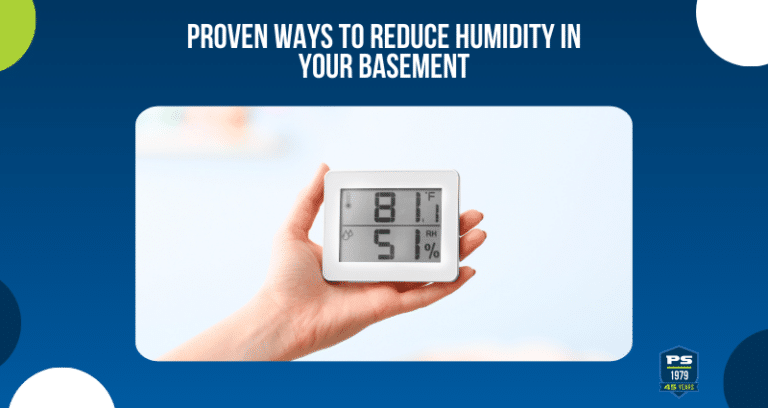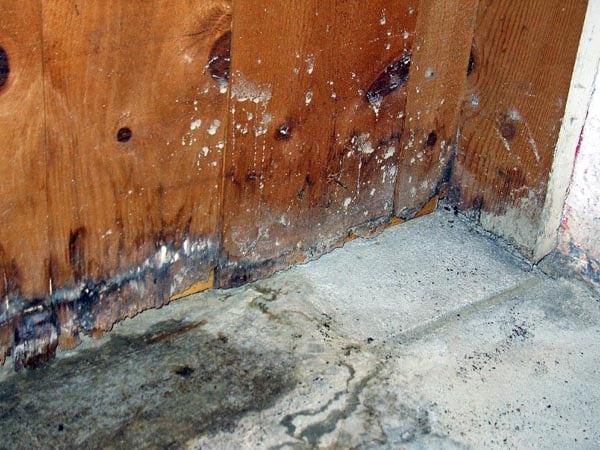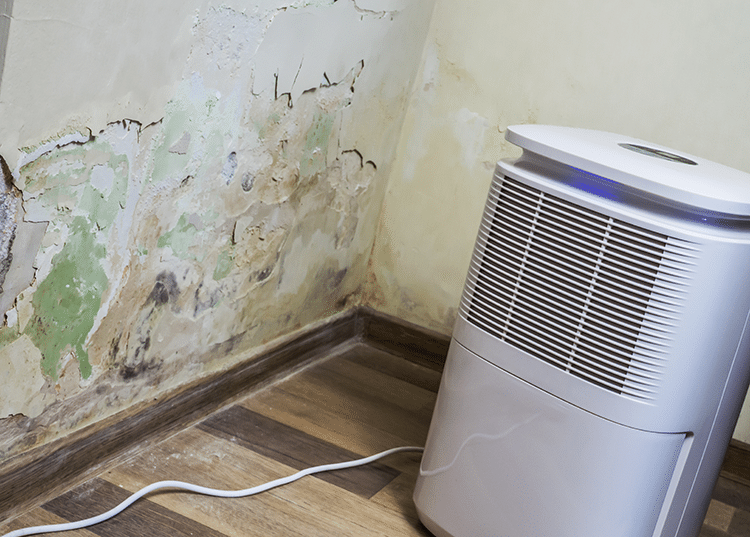
If your basement feels damp, smells musty, or shows signs of condensation, humidity is likely the culprit. Basements naturally attract moisture due to their underground location, lack of airflow, and surrounding soil. Left unchecked, excess humidity can lead to mold growth, structural damage, and poor indoor air quality.
Why Do Basements Get Humid?
Basements are prone to moisture buildup for several reasons:
- Cool Temperatures & Condensation – Warm air from outside or upstairs enters the cooler basement and condenses into water droplets on walls, floors, and pipes.
- Soil Moisture – Rain and melting snow saturate the ground around your home, allowing moisture to seep through tiny cracks or pores in the foundation.
- Poor Ventilation – Basements often have few windows or airflow, causing trapped moisture to linger.

How to Tell if Your Basement is Too Humid
High humidity isn’t just uncomfortable—it can damage your home and impact your health. Watch for these common warning signs:
- Musty or mildew odors
- Condensation on windows or pipes
- Damp spots on floors or walls
- Peeling paint or efflorescence (white, chalky residue)
- Increased allergy or asthma symptoms

Ideal Humidity Levels for Your Basement
The ideal relative humidity (RH) for a basement is between 30-60%. Once it rises above 60%, mold, dust mites, and bacteria can thrive.
You can check your basement’s humidity using a hygrometer, an affordable device that measures moisture levels in the air. If readings show close to 60% or higher, it’s time to take action.
3 Ways to Reduce Basement Humidity
1. Improve Ventilation
Fresh air is essential for reducing moisture buildup. Here’s how to enhance airflow in your basement:
- Open windows when outdoor air is drier than indoor air.
- Use fans to circulate air and push moisture out.
- Vent appliances properly to ensure humid air from dryers and stoves exits outdoors.
- Invest in an air purifier to remove allergens and improve air quality.
2. Seal Cracks & Leaks
Even small cracks in your foundation can allow moisture to enter. Prevent water intrusion by:
- Inspecting walls & floors for visible cracks or leaks.
- Applying a waterproof sealant to problem areas.
- Consider professional basement waterproofing for long-term protection.
3. Maintain Gutters & Downspouts
Your home’s drainage system plays a crucial role in keeping moisture away. Ensure that:
- Gutters are clear of debris and in good condition.
- Downspouts extend at least 6 feet away from your foundation.
- The grading around your home slopes away from the basement.
Need a Dehumidifier For Your Basement or Crawl Space?
If basic solutions aren’t enough, a basement dehumidifier might be necessary. In Part 2, we’ll cover the best ways to manage basement humidity long-term, including dehumidifiers and professional waterproofing.